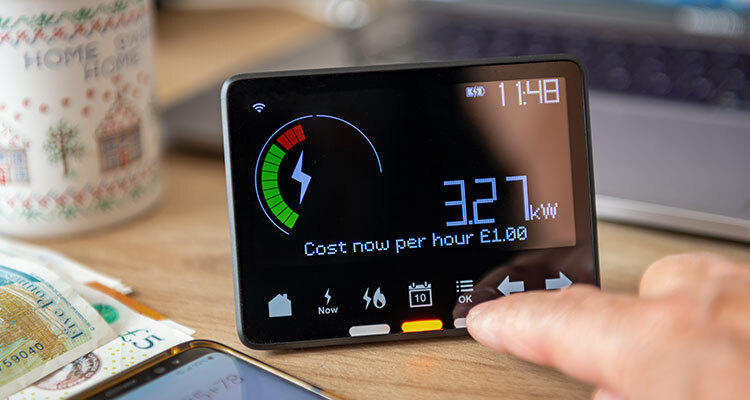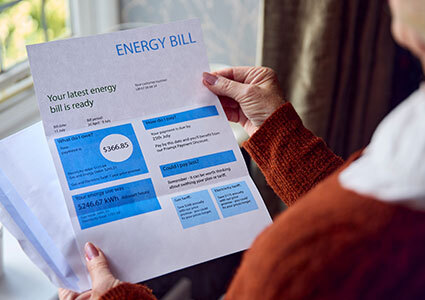
Supporting customers in debt during the cost-of-living crisis. By Ian Peters
While the Price Cap might have fallen by seven per cent at the start of October, it doesn’t mean that the pressure is off for many. Energy bills are still incredibly high, and many households are continuing to struggle to pay as a result. According to the ONS’ most recent figures (released on 6 October), around half of adults are using less fuel in their homes because of the rising cost of living, while around four in ten (43 per cent) energy bill payers reported that they were very or somewhat difficult to afford.
Debt charity StepChange recently reported that the average energy bill would still be nearly double what it was 18 months ago: many households have built up substantial arrears as a result, and more than half of new StepChange clients are behind on their dual fuel bills. 
Let’s prevent, rather than try to cure
Under rules from Ofgem, energy suppliers must help those customers who come to them in difficulty. Companies who believe they have a moral responsibility or a business imperative to manage customer indebtedness can of course take it upon themselves to proactively identify customers most in need of help – even going as far as to capture those who might be in potential difficulty, as an attempt to adopt a ‘prevention rather than cure’ approach.
It is therefore crucial that organizations not only know their customer but can maximize the insights that they have, to offer the right kind of support at the right time. There are several different sources on which they can draw upon to do this.
External data – such as third-party datasets – support the identification of customers who could be in trouble, with data on changes in personal circumstances, short-term finance requirements, loss of income or employment, and changes to relationship or residential status.
An organization’s own internal (or first party) data can be used to identify those customers at risk, pointing to attributes such as long-term health conditions, disabilities, providing full time for a dependent, or evidence of previous or current financial stress. This can then provide guidance on how they should be communicated with.
Some industries have sector-wide databases with clients registered as high priority or vulnerable, such as the Priority Services Register for those in the energy sector. Customers may also self-declare vulnerabilities. For some organizations, it may also be possible to analyze free format text in CRM systems to identify those in need of support.
Identifying vulnerability
Signs of vulnerability can often be identified in customers through changes in transactions and behavior. As a provider, it may be necessary to identify different segments or groups of customers who are classed as vulnerable for different reasons. Even those customers who were once always in credit now feel financially overextended and are at greater risk of being unable to meet or keep up with payments. Households that choose to avoid going into debt by turning their energy down or off, or by eating less, by example, will be especially hard to identify.

The first step for responsible businesses is to proactively identify vulnerable customers to exclude from certain marketing campaigns, where communications could increase the pressure on their personal circumstances. This is an ethical approach to marketing which has also been proven to increase ROI and improve campaign success.
Using both first- and third-party data, organizations can gain a rich and detailed understanding of levels and types of vulnerability and thus operate responsibly through effective communication and debt management strategies, while simultaneously ensuring fair treatment. The combination of external data variables with internal data enables data-driven decisions to be made on everything from how to price products, reduce fraud and identify vulnerable customers, ultimately leading to more personalized decisions.
Make change now
It has never been a more important time for the energy sector to be bold and demonstrate its commitment to its most vulnerable customers. By making some changes across the industry – some voluntarily to maximize consumer benefits, some by individual suppliers for brand reasons – it should be possible to avoid unintended adverse competitive effects. Despite a couple arguably being mutually exclusive, my list to kick the discussion off is:
- A social tariff with consistently defined eligibility criteria
- The ending of standing charges which hit those with lower consumption hardest
- The introduction of rising block tariffs to disincentivize high consumption (leaving overall supplier revenues the same)
- Proactive use of internal and external data sets to identify vulnerable customers (to offer the social tariff if implemented, rather than waiting for customers to apply)
- Regular scanning of consumption patterns to identify self-disconnection and proactive contacting of those customers
- Creating a focus within ECO to target poor EPC-rated properties with high consumption occupied by people on low incomes
All of these have been debated over the years. Now is the time for action.
For a list of the sources used in this article, please contact the editor.
Ian Peters
www.sagacitysolutions.co.uk
Ian Peters is a strategic adviser to data and analytics consultancy Sagacity Solutions, and former Chief Executive of British Gas. Sagacity is a dynamic data solutions company dedicated to helping organizations solve complex business challenges. Combining data solutions with delivery capabilities, Sagacity works with clients across the water, energy, telecoms, financial services, and housing sectors to achieve a common goal.
Sagacity addresses core problems that exist for clients within the lifecycle of their customers: reducing bad debt, improving revenue and margin, and optimizing value through six core solutions. Sagacity enables clients to extract maximum value by joining the dots between data, people, policies, processes, and systems.